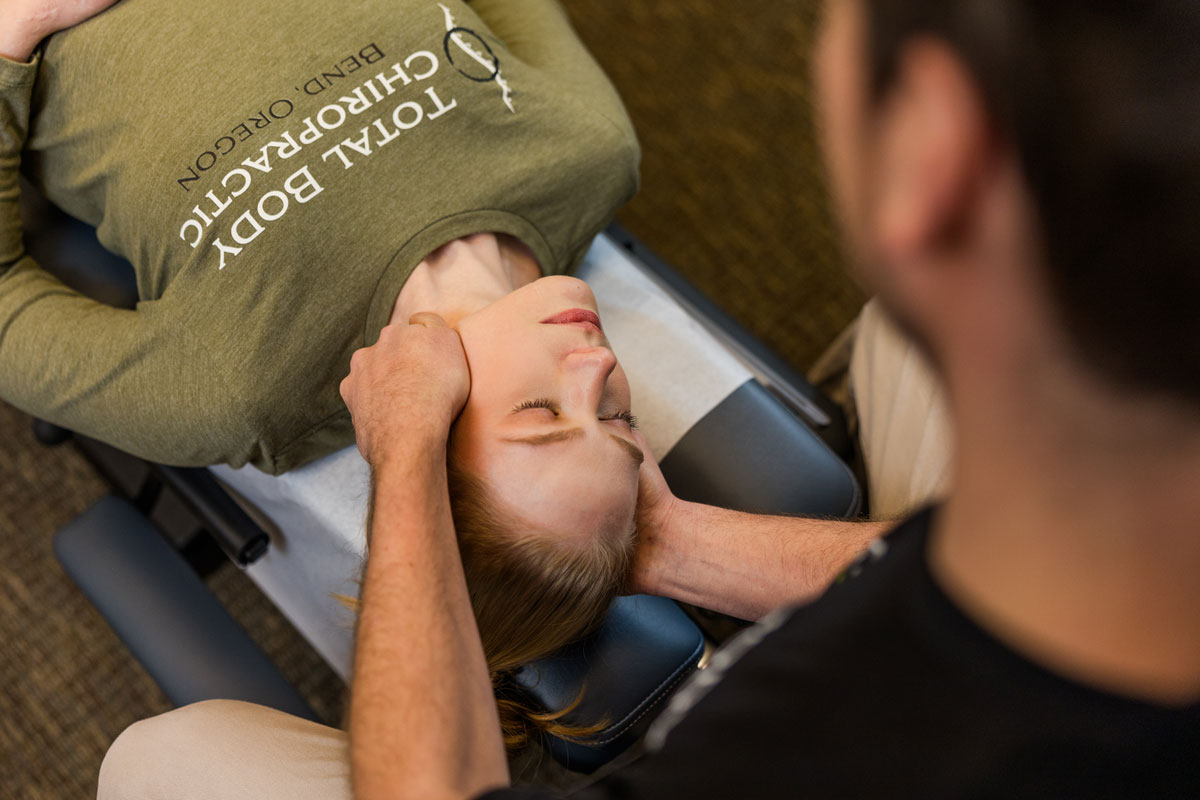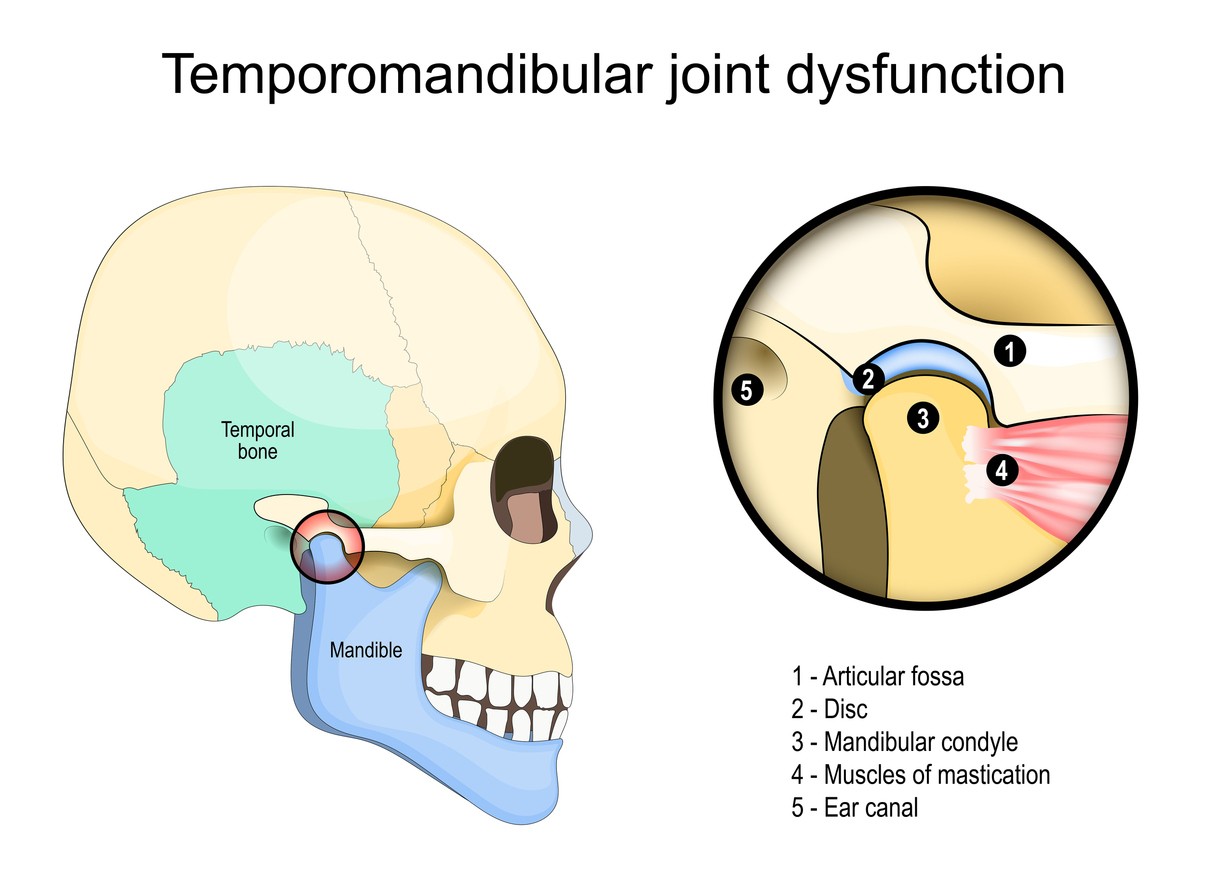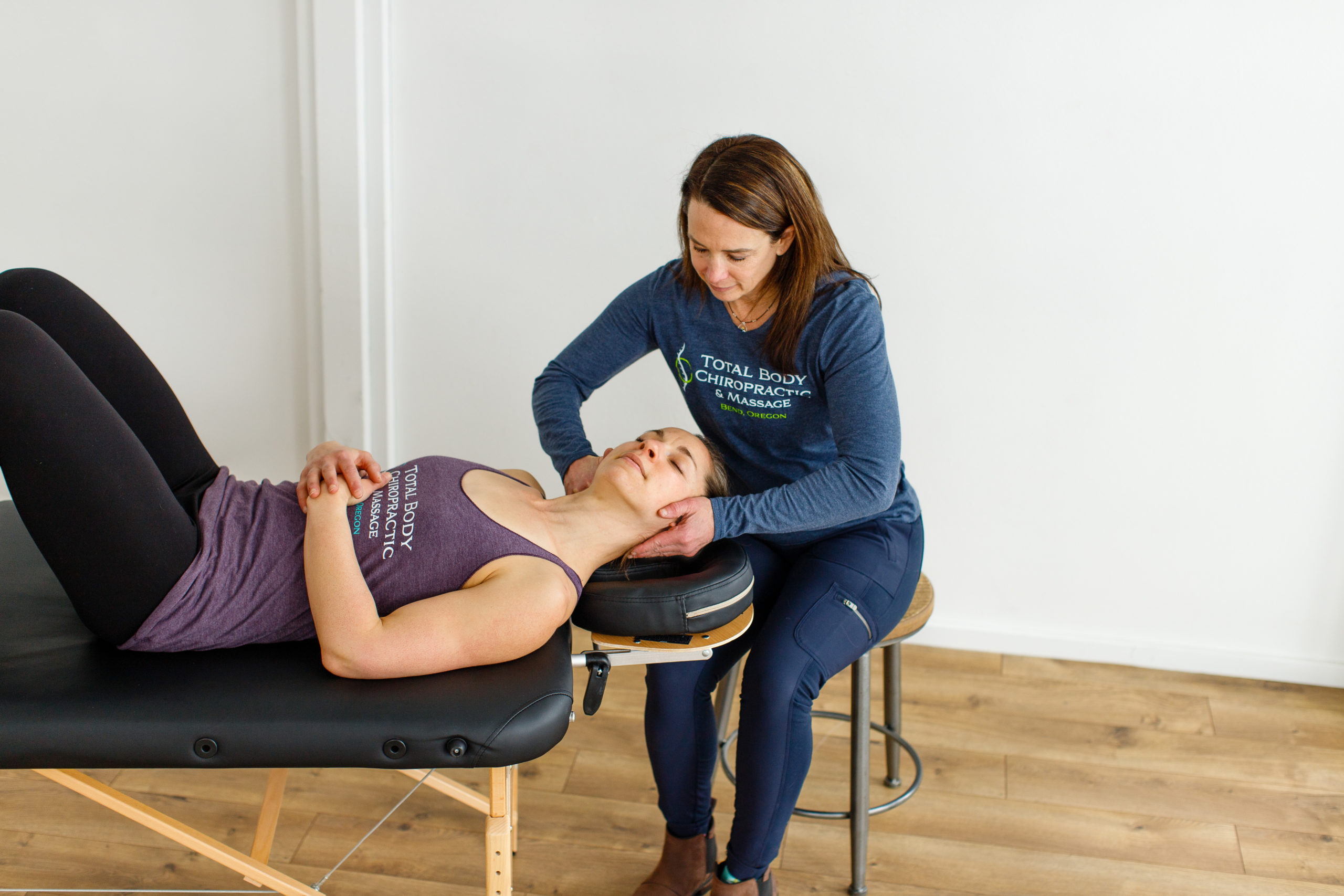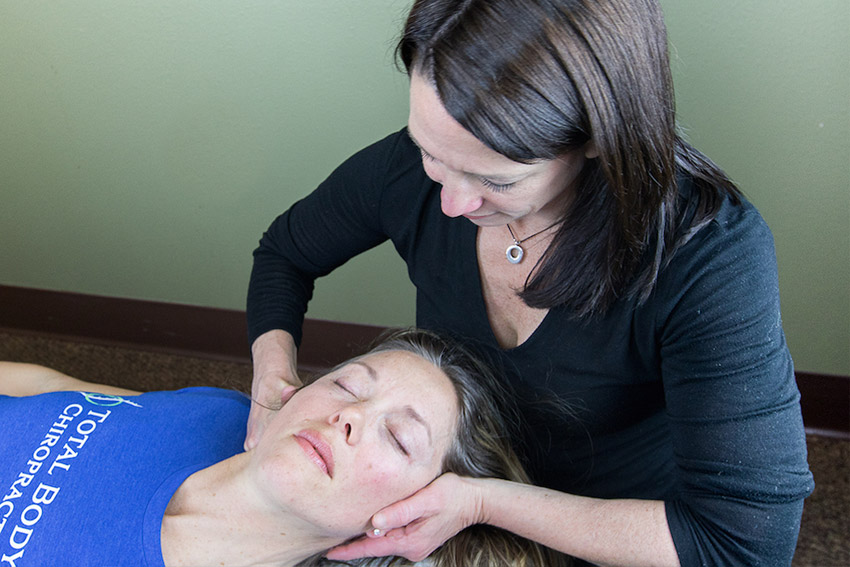How Your Chiropractor Can Provide Tendonitis Relief with Shockwave Therapy
Tendonitis is a common and frustrating condition that affects many people, causing pain, stiffness and limited mobility in the affected area. It occurs when a tendon, the tough connective tissue that attaches muscle to bone, becomes inflamed and irritated. This can happen due to overuse, sports injury, or simply aging and wear and tear on the body.
Common types of tendonitis include tennis elbow, Achilles tendinopathy, rotator cuff tendonitis, and patella tendonitis. While tendonitis can often be managed with rest, ice, anti-inflammatory medication and physical therapy, in some cases the pain and dysfunction can be stubborn and resistant to conservative treatments. That’s where shockwave therapy comes in as a potential solution.
Shockwave therapy, also known as extracorporeal shockwave therapy (ESWT), is a relatively new noninvasive treatment that is growing in popularity among chiropractors to treat musculoskeletal disorders. It involves the application of high-energy acoustic waves to the affected area, which can help reduce pain and promote healing of the damaged tendon.
In this blog post, we’ll take a closer look at what extracorporeal shockwave therapy is, how it works, and how it can be leveraged by chiropractors to help patients find relief from tendonitis.
What is Shockwave Therapy?
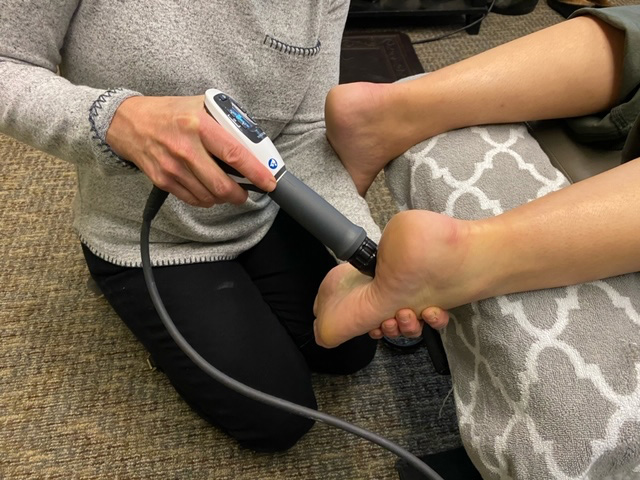
Shockwave therapy is a non-invasive treatment that uses specialized medical equipment to generate and apply acoustic pressure waves to the body. These pressure waves, or shockwaves, are focused on the area of injury or inflammation, such as a tendon that is inflamed due to tendonitis.
The shockwaves are created using an electromagnetic or electrohydraulic generator, and are then transmitted into the patient’s body through a handheld applicator. The shockwaves penetrate several centimeters into the tissues, causing both physical and biochemical changes that can stimulate the healing process.
Shockwave therapy was originally developed in the 1980s for the treatment of kidney stones, and has since been adapted for use in treating various musculoskeletal conditions like tendonitis, plantar fasciitis, and bone fractures.
Numerous clinical trials and systematic reviews have demonstrated the efficacy of shockwave therapy in treating various forms of tendonitis, with studies showing significant improvements in pain, function, and patient satisfaction compared to sham or placebo treatments.
How Does Shockwave Therapy Work?
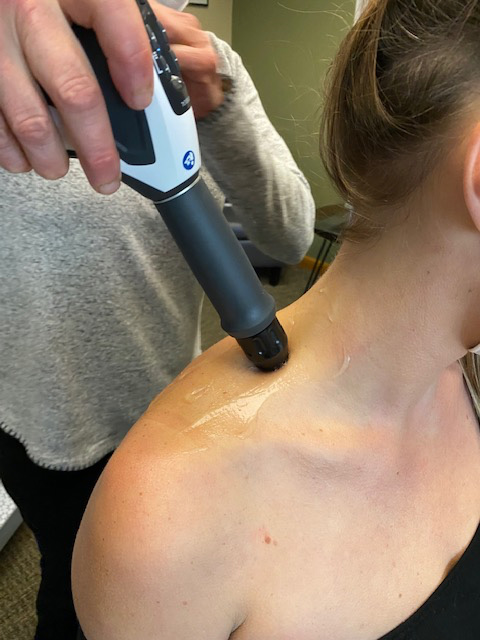
The exact mechanisms by which shockwave therapy exerts its beneficial effects are not yet fully understood, but several theories have been proposed:
1. Cavitation and microtrauma: The high-energy shockwaves create small gas bubbles (cavitation) and microscopic tears (microtrauma) in the affected soft tissues. This triggers the body’s natural healing response, stimulating the release of growth factors and attracting healing cells to the area.
2. Increased blood flow: The shockwaves dilate blood vessels and increase local blood circulation to the treated area. This can enhance the delivery of oxygen and nutrients to promote tissue repair.
3. Analgesia: Shockwave therapy may also have a pain-relieving effect. The shockwaves are thought to interrupt the transmission of pain signals and have a desensitizing effect on nerve endings.
4. Cell signaling: The mechanical forces of the shockwaves can trigger changes in cell membrane permeability and activate various signaling pathways within cells. This can lead to the upregulation of genes involved in tissue regeneration.
When used to treat tendonitis, the shockwaves are specifically targeted to the areas of the tendon that are inflamed and damaged. Over the course of several treatment sessions, the cumulative effects of the shockwaves can help reduce pain and stimulate the body’s natural healing processes within the tendon.
How is Shockwave Therapy Used for Tendonitis?

Shockwave therapy has been found to be an effective treatment option for various types of tendonitis, including:
- Tennis elbow (lateral epicondylitis)
- Achilles tendonitis
- Rotator cuff tendonitis
- Patellar tendinopathy (jumper’s knee)
- Plantar fasciitis
The treatment protocol typically involves 3-5 sessions, with each session lasting 10-20 minutes. During the session, the chiropractor will use a handheld applicator to deliver the focused shockwaves to the affected tendon.
Patients may feel some discomfort during the treatment, which is often described as a deep, pulsing sensation. Local anesthesia is usually not required, as the discomfort is generally well-tolerated. The chiropractor may also recommend the use of an icing or warming protocol before or after the treatment to help manage any post-treatment soreness.
After the shockwave therapy sessions are complete, many patients report a reduction in pain and a significant improvement in function within the first 4-12 weeks. However, the full benefits may take several months to be realized as the tendon continues to heal.
It’s important to note that shockwave therapy is not a substitute for other conservative treatments like rest, physical therapy, and anti-inflammatory medications. Rather, it is often used in conjunction with these other modalities as part of a comprehensive treatment plan for tendonitis.
When to Consider Shockwave Therapy for Tendonitis

Shockwave therapy is generally considered when more conservative treatments for tendonitis have been unsuccessful. Some key indications that shockwave therapy may be a good option include:
- Chronic, persistent tendonitis that has failed to respond to rest, physical therapy, and other treatments after 3-6 months
- Recurrent or recurring tendonitis that keeps coming back despite treatment
- Tendonitis that is interfering with daily activities and quality of life
- Tendonitis that is severe enough to limit range of motion or athletic/occupational performance
Chiropractors who are trained in the use of shockwave therapy will carefully evaluate each patient’s condition and determine if this modality is appropriate based on the specific characteristics of their tendonitis.
Advantages of Shockwave Therapy for Tendonitis

Compared to other treatment options for tendonitis, shockwave therapy offers several potential advantages:
- Non-invasive: Shockwave therapy is a completely non-surgical treatment, avoiding the risks and recovery time associated with tendon surgery.
- Drug-free: It does not require the use of oral medications like NSAIDs, which can have side effects with prolonged use.
- Minimal downtime: Patients can typically return to normal activities within a day or two after each shockwave therapy session, with no prolonged recuperation period.
- Long-lasting results: Studies have shown that shockwave therapy can provide lasting pain relief and functional improvements for many patients, even years after the initial treatment.
- Avoidance of further injury: By addressing the underlying tendon pathology, shockwave therapy can help prevent the progression of tendonitis and avoid future re-injury.
- Cost-effective: Compared to more invasive treatments like surgery, shockwave therapy is a relatively low-cost option that may save patients money in the long run.
While generally considered a safe treatment, shockwave therapy can occasionally cause minor adverse effects such as temporary skin reddening, bruising, or mild discomfort at the treatment site. In rare cases, more serious complications like tendon or nerve damage have been reported, though these tend to be uncommon when the therapy is administered by a properly trained and experienced healthcare provider.
Turn to Total Body Chiropractic in Bend for Shockwave Therapy
For patients struggling with stubborn, recalcitrant tendonitis, shockwave therapy administered by one of our Bend chiropractors can be a valuable treatment option to consider. By delivering high-energy acoustic waves to the affected tendon, shockwave therapy can stimulate the body’s natural healing processes and provide lasting pain relief and functional improvements.
While more research is still needed to fully elucidate the mechanisms of action, the existing evidence suggests that shockwave therapy is a safe, non-invasive, and effective modality for managing various types of tendonitis. By incorporating this innovative treatment into their arsenal, chiropractors can offer their patients an additional tool to overcome the challenges of this often-debilitating condition.
If you are dealing with persistent tendonitis that has not responded well to other treatments, don’t hesitate to contact us. It just may be the solution you’ve been looking for to find lasting relief and get back to living your best life.






